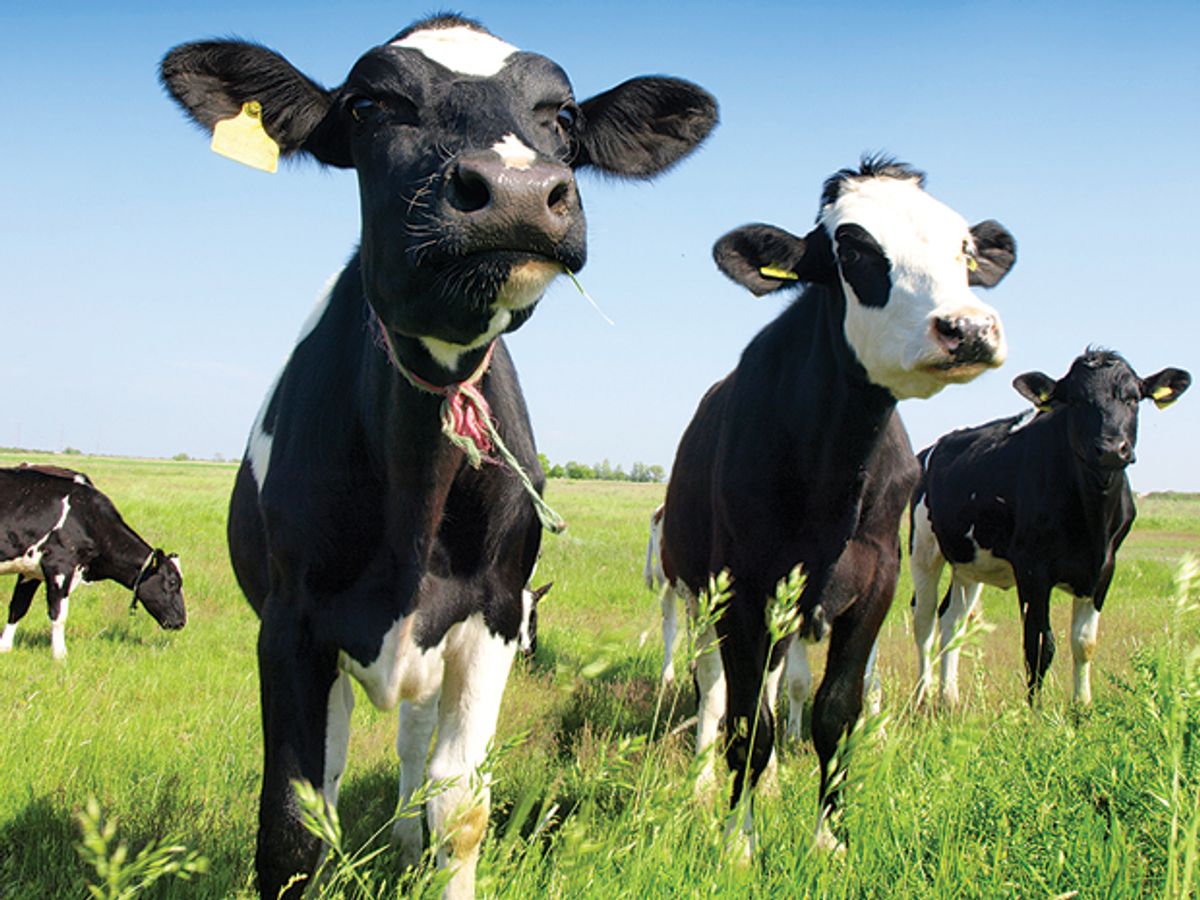Methane emissions from oil and gas extraction, herding livestock, and other human activities in the United States are likely 25 to 75 percent higher than the U.S. Environmental Protection Agency currently recognizes, according to a meta-analysis of methane emissions research published recently in Science. While experts in remote sensing debate the merits of this and other recent challenges to the EPA’s numbers, definitive answers are already on order via a high-precision Earth observation satellite to be launched next year.
The intensifying methane emissions debate has profound implications for climate and energy policy. Natural gas consumption is rising, and methane’s global warming impact is more than 30 times as much as that of carbon dioxide, molecule for molecule, and second only to carbon dioxide’s in today’s net climate impact.
Greenhouse gas inventories such as the EPA’s quantify emissions from the bottom up. They assume a leakage rate for each known source type and add up the sources. The EPA’s figures are being challenged by studies employing top-down methods, which use “inverse modeling” to transform point measurements of atmospheric methane into emissions estimates. Models of airflow are used to predict where measured methane is coming from and how fast it is flowing.
Conclusions from the meta-analysis research, led by Stanford University energy resources expert Adam Brandt, track closely the results of the most recent and most comprehensive measurement-based estimate of nationwide methane emissions. The latter, published in November in the Proceedings of the National Academy of Sciences by a multi-institution team of U.S.-based scientists, relies on more than 12 000 air samples collected from towers across the United States and flights by research planes in 2007 and 2008. Anna Michalak, one of the study’s authors and an expert in remote sensing and inverse modeling who also happens to be at Stanford, says the team’s national methane estimate is accurate to within 10 percent and shows that EPA’s inventories have some holes.
“The total from our atmospheric measurements does not equal the sum of the parts counted in the inventories. We need to look at whether there are line items that are underestimated by the inventories, or missing entirely,” says Michalak.
A regional estimate by the authors of the PNAS report for the heavily drilled south-central U.S. states, meanwhile, points to oil and gas operations as a likely under counted methane source. Accounting methods comparable to those used in the EPA’s inventories (which do not break down emissions by region) yield methane estimates of 3 million metric tons of carbon per year, only about a third of what Michalak and her colleagues found. The report’s authors conclude that the region’s oil and gas fields leak five to seven times as much methane as the EPA inventories capture.
Natural Resources Defense Council staff scientist Vignesh Gowrishankar says those higher leakage rates—at least 7.5 percent of gas production instead of the 1.5 percent assumed by the EPA—would make electricity generated from natural gas more carbon intensive than coal-fired power. The EPA says it is paying attention. In January, EPA administrator Gina McCarthy told a U.S. Senate panel that the EPA was working with other agencies to “assess emissions data” for methane and “address data gaps.”
Not all experts are buying the latest figures, however. Harvard University environmental engineer Daniel Jacob says the latest inverse modeling study did not include enough data to reliably model emissions nationwide. And Jacob says they conflict with findings from top-down estimates that he and his colleagues assembled from two months of satellite-based measurements from 2004 before the premature failure of a methane detector on Europe’s Envisat satellite. (The satellite itself operated from 2002 to 2012, five years longer than it was engineered for.) Their study affirms the EPA’s national estimate and attributes larger-than-expected emissions in the south-central U.S. primarily to livestock.
Where Michalak and Jacob do concur is on what they call an approaching revolution in top-down predictions due to satellite observation. For methane, the revolution kicks off with the €45 million (US $62 million) Tropospheric Ozone Monitoring Instrument (Tropomi), which the European Space Agency plans to launch next year on board the Sentinel-5 Precursor satellite. Like its predecessor on Envisat, Tropomi measures sunlight reflected off Earth and detects absorption of telltale wavelengths to measure atmospheric levels of methane and other gases.
But Tropomi is at least 10 times as sensitive as the Envisat instrument, according to Johan de Vries, Tropomi’s instrument scientist at Dutch Space, the satellite’s manufacturer. And its resolution is higher too, promising daily measures for the entire globe at 7 by 7 kilometers. “It will mean that you can see sources of methane on the subcity level,” says de Vries.
The data, predicts de Vries, will have political and commercial implications as top-down measurements shift the balance of responsibility for methane emissions from one state or economic sector to another.
He anticipates another round of reassessment as top-down measurement of CO2 improves. But that will take more work, because CO2’s absorption signal is harder to isolate than methane’s from the signals of other gases. “CO2 measurements are at least five years behind,” says de Vries.
Peter Fairley has been tracking energy technologies and their environmental implications globally for over two decades, charting engineering and policy innovations that could slash dependence on fossil fuels and the political forces fighting them. He has been a contributing editor with IEEE Spectrum since 2003.



